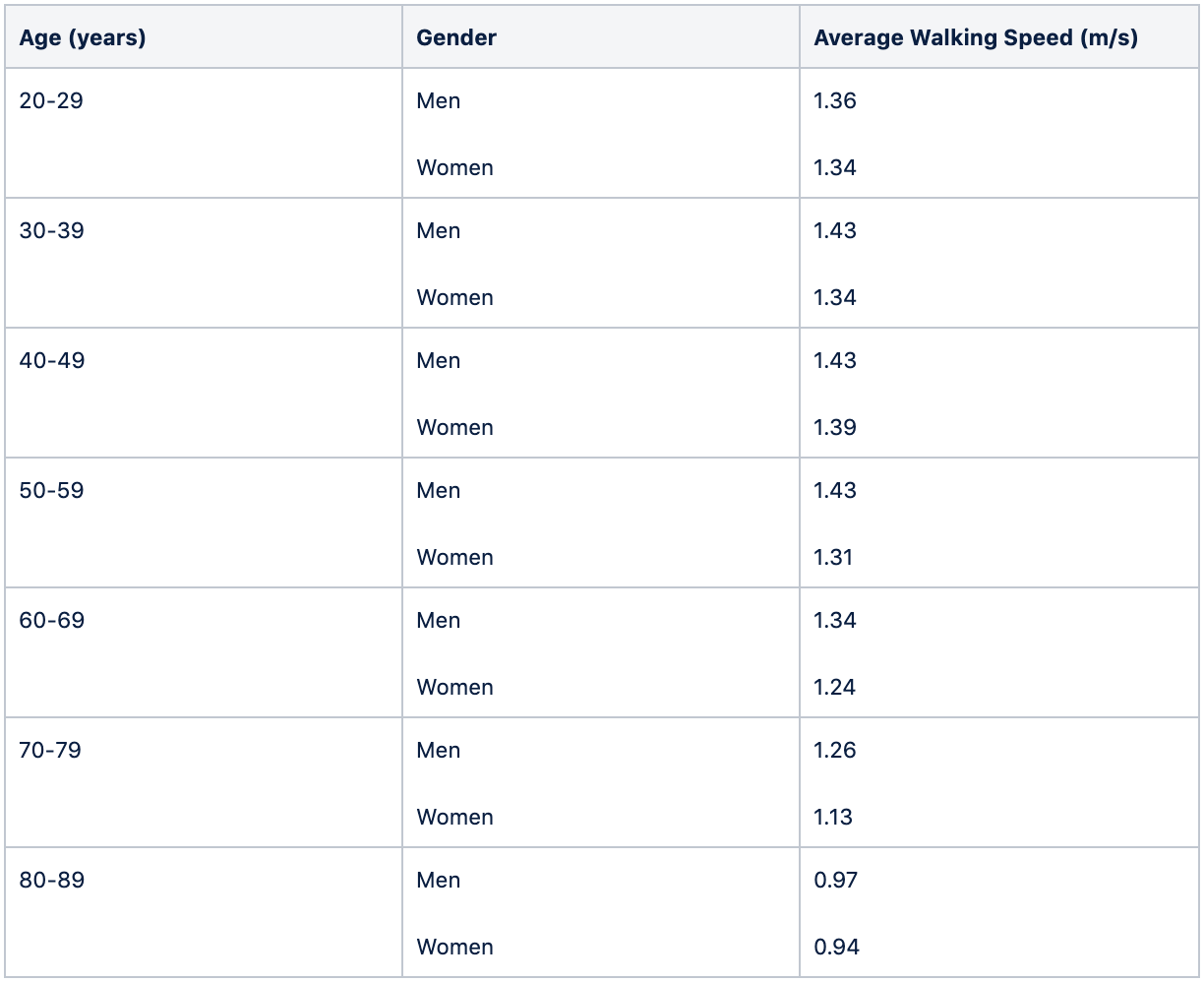A basic walk metric with wide applications.
Walking speed is often used clinically as an overall measure of walking capacity and preparedness for safe community mobility. Changes in walking speed reflect a compensation for impaired control, so slowing of gait is a proxy for challenges to control of gait.
Normative Values of Walking Speed for Healthy Community-Dwelling Men and Women

Bohannon RW, Williams Andrews A. Normal walking speed: a descriptive meta-analysis. Physiotherapy 2011;97(3):182-189.
Validation of Plantiga's Walking Speed Measure
Accuracy of (running) speed prediction with smart insoles. Lawson et al. CSB 2020 (abstract)
Walking Speed Research
Walking speed as an indicator of well-being and life expectancy in older adults - Walking speed has been shown to be associated with survival among older adults in individual epidemiological cohort studies and has been shown to reflect health and functional status.
➡️ Gait Speed and Survival in Older Adults (Studenski, et al, 2011)
Walking speed and concussion rehabilitation - Gait speed has been shown to be reduced in young adults with mTBI compared with age- and gender-matched controls. In addition, gait speed is shown to improve at discharge from vestibular rehabilitation compared with at the initial evaluation in children and adults with mTBI.
➡️ Vestibular Dysfunction Associated With Mild Traumatic Brain Injury (mTBI) (Alkathiry et al, 2019)
.png?height=120&name=Plantiga%20lockup%20black%20(1).png)